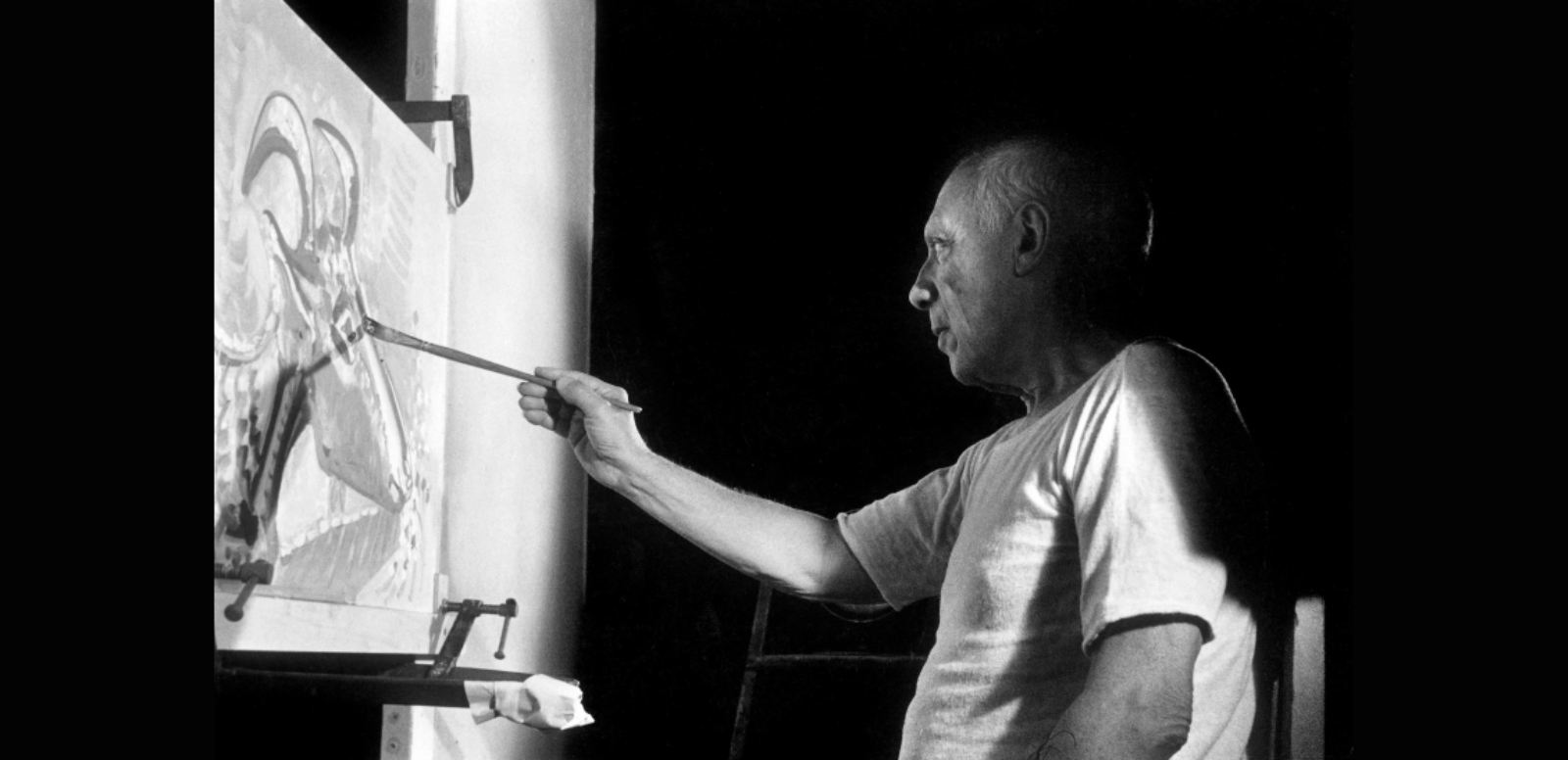
The Civil War broke out in Spain on 18 July 1936. During this period of Spanish history many artists and intellectuals condemned the coup d'état, including Pablo Picasso. By this time, the artist was already a well-known painter who had exhibited many of his works in cities such as Paris and New York and had expressed his clear support for the Republican government. For this support, moreover, he was appointed director of the Prado Museum on 19 September 1936.
In December 1936 Josep Renau, as head of the Directorate General of Fine Arts, travelled to Paris with the specific aim of inviting a number of artists to take part in the Spanish pavilion at the International Exhibition of Arts and Techniques in Modern Life, curated by José Gaos and whose architecture was to be designed by Luis Lacasa and José Luis Sert. Among the list of artists to be included in the pavilion are Joan Miró, Alexander Calder, Julio González and Pablo Picasso, with a project for an exterior mural.
Two months before the exhibition, Picasso was going through a creative and personal crisis and had not managed to resolve the commission he had been given. The bombing of the Basque village of Guernica, which gave its name to the painting, by the German air force, known to the artist through photographs published in the French newspaper L'Humanité, acted as a catalyst, and Picasso began to work on the canvas (Esteban Leal, n. d.).
As Paloma Esteban Leal points out in her review of the mural, "the result of the painting is not a representation of these bombings, but a generic plea against the barbarity and terror of the war, and unfortunately, a premonition of what was to follow: the Second World War".
On 1 May 1937 Picasso began the first sketches of the canvas. It shows the main characters such as the bull (representing the brutality of the Civil War with a frightened look symbolising a self-portrait of Picasso), the woman with the light (a ghostly allegory of the Republic), the warrior lying on the ground (representing that hope persists despite the war), and the horse (for the innocent victims of the war). It was not until 8 May that the figure of the mother and child (representing pity) appears.
At that time in the artist's life, Dora Maar was his partner. The French painter, photographer and sculptor recorded the entire process of creating Guernica until 4 June 1937, the day Picasso completed the work.
In the end, Guernica was moved to different museums, and the disputes over its final destination are recorded in the book Guernica's Travels:
"Controversy over where Guernica should be located was ongoing from the time it was deposited at MoMA. In the late 1950s, after a successful tour of Europe, a group of European intellectuals and artists suggested to Picasso that the mural should not be returned to the United States. In 1971, a group of American artists also petitioned Picasso to have the canvas removed from the New York museum. When it arrived in Spain, debates continued about which city should house the painting: Gernika, Barcelona, Malaga and Madrid were all vying for it. However, for Picasso the essential thing was that the painting should be in what was then the only major national museum: the Museo del Prado". (Borja-Villel and Peiró, 2019).
Once in Spain, the painting was first exhibited in the Prado Museum's Casón del Buen Retiro, from where it was definitively transferred to the galleries of the Museo Nacional Centro de Arte Reina Sofía in 1995.
References:
- Borja-Villel, M et al. (2019). Guernica's travels. Publications of the Collection. Museo Nacional Centro de Arte Reina Sofía.
- Esteban Leal, P (2003). Guernica and Picasso 1881-1914. Ediciones Aldeasa.
- Esteban Leal, P (n. d.). Guernica. Museo Nacional Centro de Arte Reina Sofía. Available at: https://www.museoreinasofia.es/coleccion/obra/guernica

